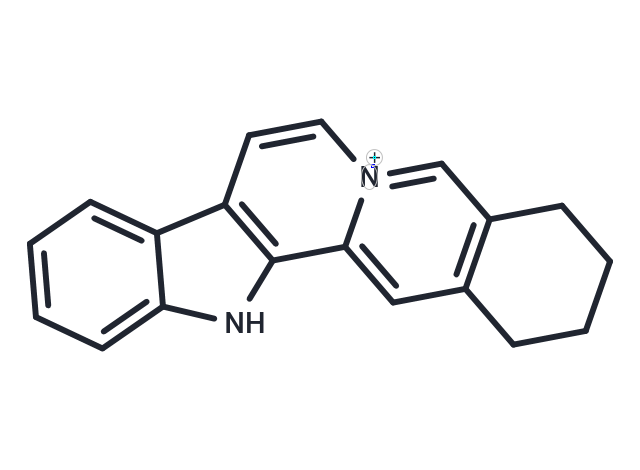Shopping Cart
- Remove All
 Your shopping cart is currently empty
Your shopping cart is currently empty

Sempervirine can unwind circular DNA, it shows selective inhibition of in vitro synthesis of cancer DNA .

| Pack Size | Price | Availability | Quantity |
|---|---|---|---|
| 1 mg | $208 | In Stock | |
| 5 mg | $520 | In Stock | |
| 10 mg | $753 | In Stock | |
| 25 mg | $1,160 | In Stock | |
| 50 mg | $1,570 | In Stock |
| Description | Sempervirine can unwind circular DNA, it shows selective inhibition of in vitro synthesis of cancer DNA . |
| In vitro | The high template in vitro activity of native DNA from cancerous mammalian and plant tissues, compared to DNA from healthy tissues, enabled us to select substances which selectively inhibit cancer DNA synthesis. Among them, alstonine, serpentine, Sempervirine and flavopereirine, all alkaloids which belong to the Beta-carboline class, distinguish cancer DNA from healthy tissue DNA inhibit DNA in vitro synthesis when native DNA from different cancerous tissues or cells is used as template. They have practically no effect on DNA from healthy tissues. The inhibitory effect of alkaloids is due to their capacity to form an 'alkaloid-cancer DNA' complex which has been characterized by use of the Sephadex column. |
| Molecular Weight | 273.35 |
| Formula | C19H17N2 |
| Cas No. | 6882-99-1 |
| Smiles | C=12C=3[N+](=CC4=C(C3)CCCC4)C=CC1C=5C(N2)=CC=CC5 |
| Relative Density. | 1.28g/cm3 |
| Storage | Powder: -20°C for 3 years | In solvent: -80°C for 1 year | Shipping with blue ice. | |||||||||||||||
| Solubility Information | DMSO: 1.67 mg/mL (6.12 mM), Sonication is recommended. | |||||||||||||||
Solution Preparation Table | ||||||||||||||||
DMSO
| ||||||||||||||||

Copyright © 2015-2024 TargetMol Chemicals Inc. All Rights Reserved.